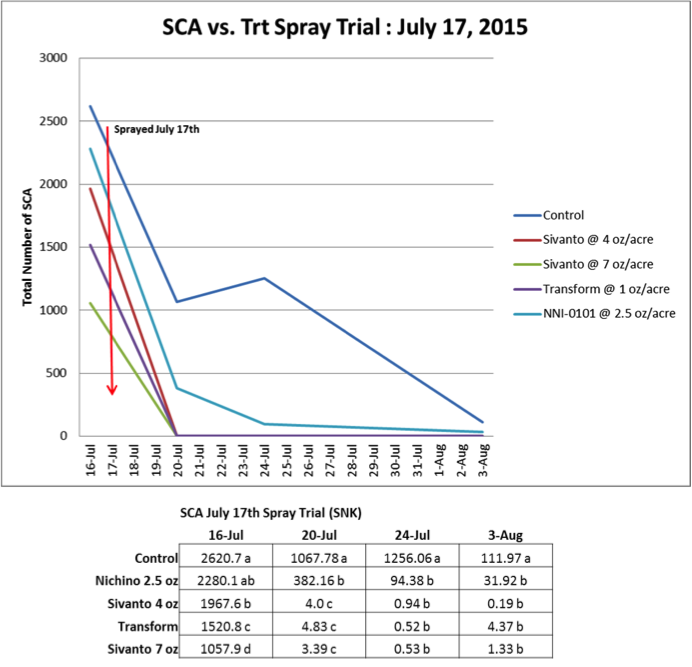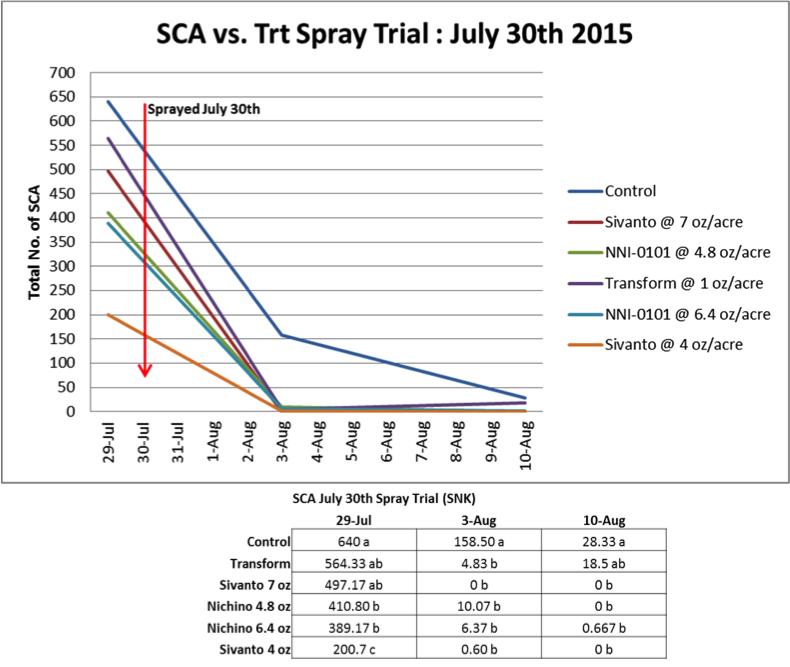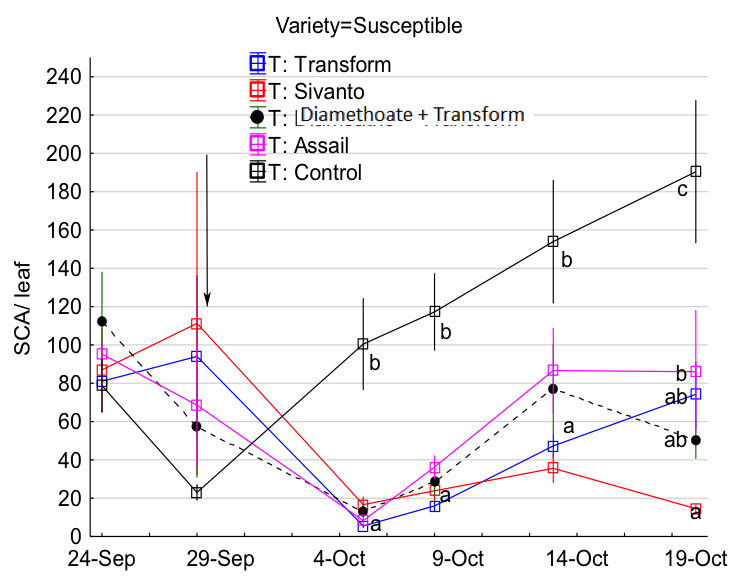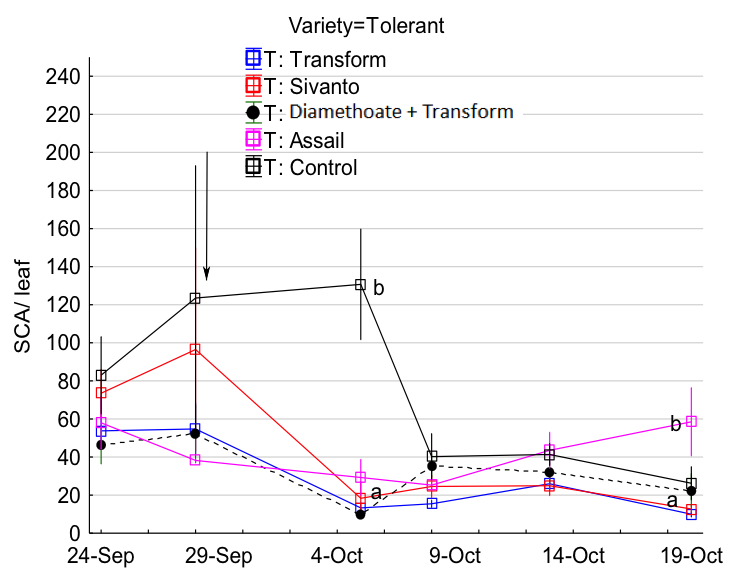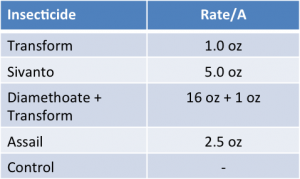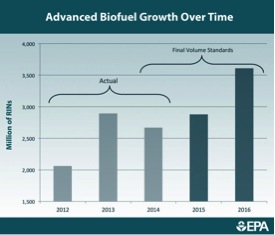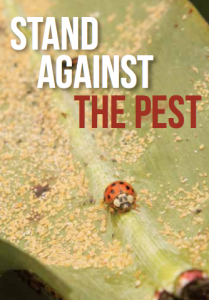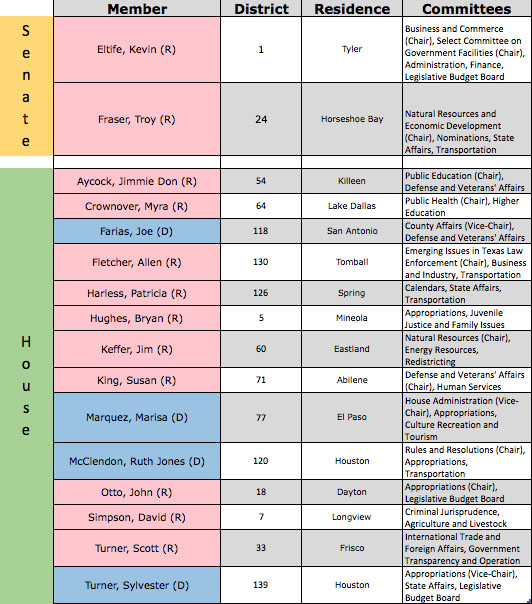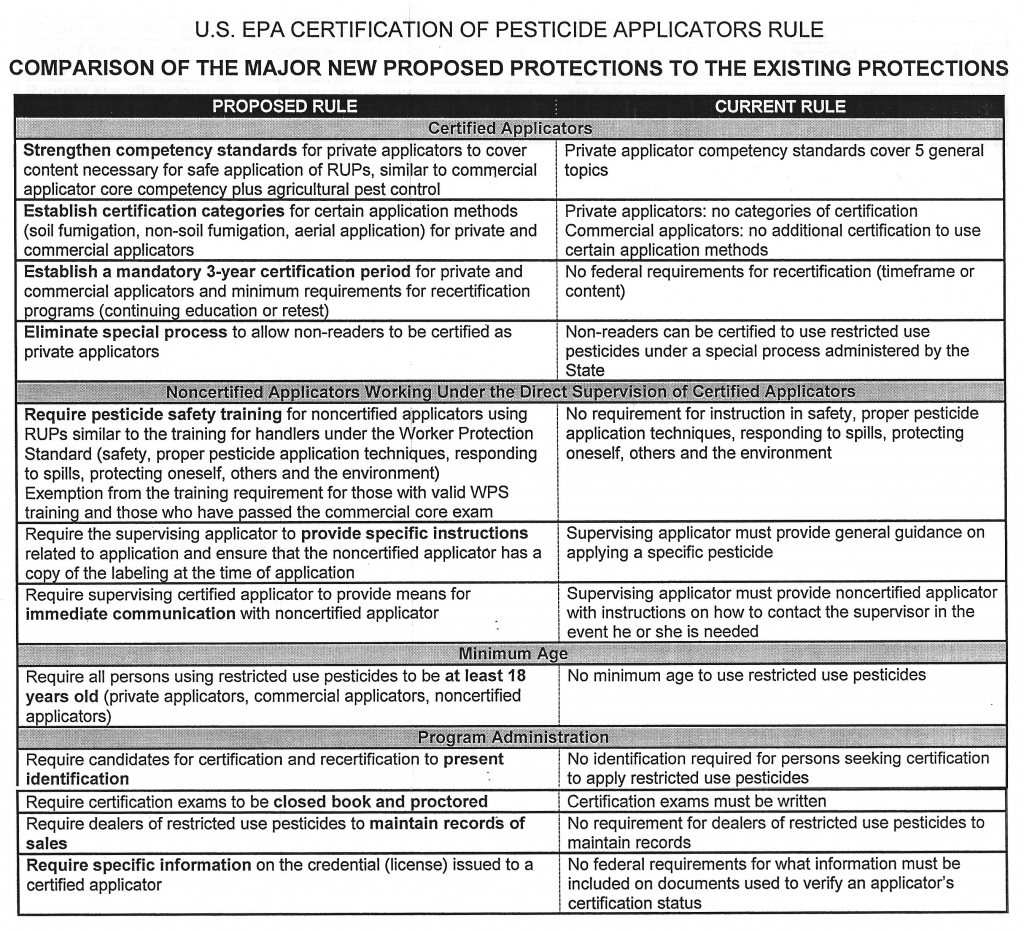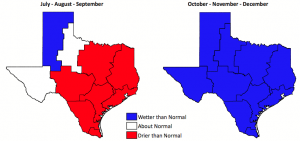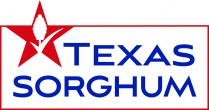- About UsTexas Grain Sorghum Association is….
- Texas Sorghum InsiderNewsletters…
- Legislative News
- Photos
- Contact UsTexas Grain Sorghum Association P.O. Box 905 Salado, TX 76571 Wayne Cleveland, Executive Director wcleveland@mindspring.com (254) 541.5375 Morgan Newsom, Producer Relations Coordinator morgan@texassorghum.org (806) 438.5994 SEND US A MESSAGE: [contact-form-7 404 "Not Found"]
- Sorghum Dashboard
- Events
January 25, 2016
Eminent Domain Database – In two weeks, the Comptroller’s office will begin constructing an online database for public and private entities operating with eminent domain authority. The Comptroller’s office has been collecting information for the database, which was established by SB 1812 during last year’s 84th Legislative Session, since December 7th, 2015 and will conclude the bulk of the information gathering phase on February 1st. The database is designed to enhance transparency of the eminent domain process by establishing a continuously updating platform. Each year, entities with eminent domain authority will not only have to provide the basics like their name, address, and contact information, but they will also have to detail:
- The legal provision(s) granting the entity’s eminent domain authority;
- The focus or scope of the eminent domain authority granted to the entity;
- The earliest date the entity had authority to exercise the power of eminent domain;
- The entity’s taxpayer identification number, if any;
- Whether the entity exercised its eminent domain authority in the preceding calendar year by filing a condemnation petition under Section 21.012, Property Code
The database will be live and available to browse on September 1st, 2016. We will keep you updated as its development continues. In the mean time, we encourage you to familiarize yourself with current eminent domain entities by exploring the information obtained from SB 1812’s precursor: SB 18 from the 82nd Legislative Session.
Leadership Sorghum Applications Open – If you are interested in applying for Leadership Sorghum Class III, the Sorghum Checkoff will be accepting applications Jan. 4-April 30, 2016. Interviews with selected applicants will take place in late May 2016. Leadership Sorghum Class III will be announced June 30, 2016.
In order to be eligible for Leadership Sorghum, participants must meet the following requirements:
- Be a farmer actively engaged in sorghum production
- An applicant who is actively engaged in sorghum production but is employed by an operation must have employer approval
- Men and women are encouraged to apply
- Applicants must be U.S. citizens
For more information on Leadership Sorghum and to review the Leadership Sorghum Class III selection criteria, click here.
TWDB now accepting applications for Fiscal Year 2016 Agricultural Water Conservation Grants – The Texas Water Development Board (TWDB) is now accepting applications for Fiscal Year 2016 Agricultural Water Conservation Grants.
Applications are due to the TWDB no later than Wednesday, February 17, 2016, at 12:00 p.m.
TWDB has up to $600,000 in grant funding available, with applications limited to a maximum of $150,000 per project. Eligible grant categories this year include:
- Technical assistance, outreach, education, and demonstrations
- Agricultural water use monitoring equipment
- Feasibility study for development of a statewide evapotranspiration network
- Study of irrigation efficiency in Texas
For more information, please view the full request for applications and instructions on how to apply at http://www.twdb.texas.gov/about/contract_admin/request/rfa_02.asp.
Interested applicants are encouraged to contact Cameron Turner at 512-936-6090 or cameron.turner@twdb.texas.gov for more information about grant opportunities this year.
December 18, 2015
Texas Primary Filing – Monday the 14th was the filing deadline for Texas’s primary elections. Candidates who failed to register by then will not be eligible to appear on the March 1st ballot. The election will decide party nominations for president, Congress, state legislature, and local office, and the races are shaping up to be contentious and unpredictable. There are 20 candidates registered to appear on the ballot for the presidential primary – 12 Republicans and 8 Democrats. Neither John Cornyn nor Ted Cruz’s Senate seats are up in 2016, but every Congressional House seat faces an election. All 36 of those seats will be contested, except for Joaquin Castro from District 20. There are also a host of state legislature elections to keep an eye on: Democratic Rep. Trey Martinez-Fischer will again contest Senator Jose Menendez for his District 26 seat and Rep. Ruth McClendon’s District 120 seat will be open as she steps down after 20 years of service. Eight candidates will challenge for the open position on the state’s Railroad Commission as well. To see who is running for office in your county, follow this link to the Secretary of State’s website.
Ag/Timber Exemption Renewal Deadline Approaches – All ag/timber registration numbers are expiring on Dec. 31, 2015, regardless of when they were issued. Under state law, agricultural and timber producers can claim sales tax exemptions for some items they use to produce products for sale. If you haven’t already renewed your registration, you need to do so now if you want to keep it. To continue claiming the exemption, you can renew through the Comptrollers office, online or by mail. You can get detailed information on renewals by clicking here or by calling toll-free 1-844-AG RENEW (1-844-247-3639).
Insecticide Efficacy Tests – Danielle Sekula-Ortiz (IPM Agent) and Dr. Raul Villanueva (Extension Entomologist) of Texas A&M AgriLife Extension, Weslaco, recently published results from trials performed in summer and fall of 2015. Results are illustrated below.
Insecticide efficacy tests in Summer of 2015
Insecticide efficacy tests in Fall of 2015
*For both Fall efficacy trials the insecticide treatments were replicated 3 times randomly
December 4, 2015
“Patriarchs” Retire from Grain Sorghum Board—Jack Cobb (Plains, TX) and Dale Spurgin (Allen, TX) both retired from the TGSB board of directors after 60 years of combined service. Mr. Spurgin and Mr. Cobb both began their years of service in the 1980’s essentially when the state program was just starting.
“Both men were instrumental in starting programs as well as guiding them through their awkward infancies into what we know today as a successful national checkoff (USCP and TGSB),” said Wayne Cleveland, Executive Director of TGSB. “As well as a highly functional membership program, NSP and TGSA. Not many have had that level of awareness and tenacity but they both endured and conquered and for that we are most grateful.”
In addition to serving on the state boards both men served on national boards. Mr. Spurgin served as the Chairman of the Board of the US Grains Council in 2001. “Their humility and desire to hear all voices from our industry is what defined their terms here. They are both gentlemen that always erred on the side of the grower and remained true to their vision of a vibrant industry, of which we will enjoy for years to come.”

Jack Cobb (left) and Dale Spurgin (right) receive plaques in honor of their service to the sorghum industry at their final Texas Sorghum Board meeting.
EPA Renewable Fuels Standard (RFS) 2015 Ruling—On November 30th, the EPA released its final ruling for the Renewable Fuel Standard, covering volume requirements for cellulosic biofuel, biomass-based diesel, advanced biofuel, and total renewable fuel for the 2014, 2015, and 2016 marketing years. The 2014 and 2015 levels reflect the increase in actual biofuel usage over the past two years, while the 2016 standards are intended to continue that upwards trend. Under these new requirements, advanced biofuel volumes will increase 25% from 2015 to 2016 – from 2.88 billion gallons to 3.61 billion gallons.
In 2012, the EPA classified grain sorghum as an D5 Renewable Identification Number advanced biofuel. This categorization is determined by biofuel’s net reduction of lifecycle (both the production and processing of the fuel) greenhouse gas emissions. According to this 2012 ruling, the EPA declared that sorghum not only met the 20% lifecycle greenhouse gas reduction threshold to qualify as a renewable fuel, but that it also met the 50% reduction threshold to be categorized as an advanced biofuel.
In finalizing these future volume requirements, the EPA is further committing to the viability of biofuels as an effective, environmentally-conscious solution for this country’s future energy needs. We look forward to continuing to expand the role of sorghum in that commitment.
All graphs, charts, and data available through the EPA at http://www2.epa.gov/renewable-fuel-standard-program/final-renewable-fuel-standards-2014-2015-and-2016-and-biomass-based
Defense Against the Sugarcane Aphid—The sugarcane aphid guide is now posted to the USCP website: http://sorghumcheckoff.com/pest-management/. This booklet contains the most up-to-date information USCP has compiled regarding best management practices for SCA. If you would prefer a hard copy booklet, please contact Faith Jurek at faithj@sorghumcheckoff.com.
November 17, 2015
Ninth Circuit Court Gets Sulfoxaflor Decision Wrong, NSP Insists on Solutions – The following is a press release provided by National Sorghum Producers – The Environmental Protection Agency last week issued a cancellation order for all previously registered Sulfoxaflor products, including Transform. This cancellation order is in response to the Sept. 10, 2015, ruling by the Ninth Circuit Court of Appeals against EPA, which became effective Nov. 12. Transform was widely used to control sugarcane aphids in sorghum during the 2014 and 2015 growing seasons. More than 10 states received Section 18 emergency use exemption to use Transform, mitigating yield, revenue and acreage loss in thousands of U.S. sorghum acres.
“Transform has been an important tool for sorghum farmers across the nation to combat sugarcane aphids,” said National Sorghum Producers Past Chairman J.B. Stewart, “and as an organization, we will work as hard as we can to ensure the product is available next year through the Section 18 process. NSP also stands ready to support Dow AgroSciences and the EPA in re-registering this essential product.”
“This is an example of an activist court,” Stewart said, “and as an organization, we plan to do our part in pushing back on these nonsensical court decisions that unfortunately are becoming more frequent and to the detriment of farmers and ranchers across the nation. We must go to bat for them and keep tools available as we face stricter regulations and declining prices on the farm during trying and uncertain times.”
“This court is known for making rulings that align with activist organizations at the expense of agriculture,” Stewart said, “and we will continue to fight to keep products available for our producers that help them remain profitable.”
###
Notice of Intent for TGSA to Change By-Laws at December Meeting – The TGSA board of directors will consider a plan to change it’s board structure by adding a delegate body to the current structure at a November 30 meeting in Amarillo. In addition TGSA will discuss and take action on forming a working committee structure that will require modifications to the current by-law structure. Any dues paying member of TGSA is invited to attend the meeting and provide input and suggestions. For more information please contact Wayne Cleveland at wcleveland@mindpsring.com or call 254.541.5375.
Global Food Security – In 2012 DuPont collaborated with the Economist Intelligence Unit to create the Global Food Security Index, an exhaustive ranking of each nation’s relative food security as weighed by a variety of factors. While you can sort and filter these rankings by variables such as affordability, availability, and political risk, the composite rankings tell a singular story: The United States has the most secure food supply in the world. When considering sorghum’s relationship to the global food infrastructure, it is important to remember that the nations purchasing our product aren’t often as stable as the United States. Consider the top five importers of American sorghum (per U.S. Grains Council):
In addition, considering many of these nations primarily import sorghum for human consumption, there is considerable room for growth in trading opportunities there. We at TGSP will be monitoring these trends and relaying new developments, but also encourage you to explore the data here.
October 23, 2015
Latin America Trade Team Visits Texas – A U.S. Grains Council (USGC) trade team of Colombian and Peruvian poultry and swine producers and grain importers traveled to Texas Oct. 19-21 as part of a learning journey on purchasing U.S. sorghum and incorporating it into animal rations.
The trade team spent two-and-a-half days in Texas, and during that time, met with industry representatives from producers to end-users. Some of the meetings on their agenda included:
- Meetings with grain merchants representing Gavilon and Attebury
- Tour of Attebury’s transloading containerization facility, Saginaw
- Meeting and elevator tour, Gary Holcomb, Ag Producers Coop, Sunray
- Swine feeding seminar, Jason Frantz, Texas Farms
- Farm tour, Blake Tregellas, Tregellas Family Farms, Perryton
- Wrap-up dinner, James Born, Little B Farms, Booker
Peru and Colombia are promising markets for U.S. sorghum. In Peru, there is an opportunity for U.S. sorghum due to a duty preference and no quota on sorghum imports. Likewise, Colombia has a duty-free quota for U.S. sorghum, however the volume is small and will limit overall demand until the tariff rate quota is phased out.
Fifth and Final Round of Interim Charges Announced – Last week, Lieutenant Governor Dan Patrick announced the fifth and final round of interim charges for the Texas Senate to study while the legislature is not in session. Each of the Senate’s 14 primary committees received a bevy of charges. Some charges – such as requesting the Finance committee to examine property tax relief – capitalized on momentum gained from the recent legislative session. Others – like High Education’s charge to investigate tuition deregulation – indicate a renewed effort at failed legislative initiatives. Many of the Lt. Governor’s charges will shape the approach the 85th Legislature takes to agriculture policy in 2017. For instance, the following subjects will be examined:
- Eminent domain and ensuring fair compensation
- Implementation of pending EPA regulations and Waters of the U.S. developments
- Surface water and groundwater rights and regulations
- TDA Market Development Services expansion
- Monitoring TWDB’s approach to brackish groundwater zones
The list of the Senate’s interim charges can be found in its entirety on the Senate’s website http://www.senate.state.tx.us/. We will await the House’s interim charges and let you know how you can get involved in the interim study process to best ensure your legislature understands the true needs of its constituents.
A Closer Look at Constitutional Amendments – On November 3rd, Texans will take to the voting booths to decide whether to adopt seven constitutional amendments passed by the 84th Texas Legislature. These proposed amendments already had to pass a 2/3 supermajority vote in both the Senate and the House to qualify for the upcoming ballot. If November 3rd is an inconvenient date for you, early voting began on October 19th and will last until October 30th. You can find the full text of each proposed amendment here, but below is an overview of what to expect if they pass:
- Proposition 1 (SJR 1) – A cornerstone of the 84th Legislature’s much-debated tax relief initiative, SJR 1 seeks to increase the homestead exemption from $15,000 to $25,000. By adopting this amendment, Texas homeowners would be able to exempt an additional $10,000 from the ad valorem property taxes imposed by their school district. The average homeowner can expect to save about $120-130 a year. This would mark the first increase of the homestead exemption since 1997.
- Proposition 2 (HJR 75) – HJR 75 seeks to correct an unintentional loophole that resulted from a previous constitutional amendment aimed at alleviating the property tax burden on a surviving spouse of a disabled veteran. The previous amendment had not covered surviving spouses of veterans who passed away before 2011, this amendment corrects that error.
- Proposition 3 (SJR 52) – SJR 52 seeks to repeal the requirement that various statewide offices – Comptroller, Attorney General, etc. – physically reside in Austin.
- Proposition 4 (HJR 73) – HJR 73 seeks to permit charities of professional sports teams to conduct charitable raffles as governed by general law.
- Proposition 5 (SJR 17) – SJR 17 seeks to increase the population maximum for county maintenance of private roads from 5,000 to 7,500. This would allow remote, rural counties to expend public funds on private road repair and construction. This amendment would expand such a right to approximately 20 additional counties.
- Proposition 6 (SJR 22) – SJR 22 seeks to recognize the constitutional right of Texans to hunt, fish, and harvest wildlife.
- Proposition 7 (SJR 5) – SJR 5 seeks to adjust tax revenue streams towards spending on state transportation. If the sales & use tax and motor vehicle sales & rental tax each exceed certain thresholds, then those surpluses will be redirected from the General Revenue Fund to the State Highway Fund. Legislators have declared this the “largest single increase in transportation funding in Texas history.”
October 7, 2015
Why China Continues to Buy US sorghum – Today there are 137 million bushels (the production of Texas), that China has committed to purchasing this year. Of that, only 22 million bushels have been shipped. Overnight, China literally bought every kernel of US produced sorghum they could find last marketing year. Consuming 382 million bushels of grain sorghum with a minor knowledge of nutritional feeding basics. This required great faith and a flawed internal buying mechanism intended to protect Chinese corn growers. The policy, that places the price of Chinese produced corn at a $8.50+/bushel (yes bushel, not cwt) guaranteed from their government, still remains in place literally making that corn too high priced for its own consumer CAFO’s to purchase during their “public auction” system. This makes US produced grain sorghum, which has no tariff rate quota(trq) or duties after a specified amount of exports, price friendly to a policy driven market. During this last year, the United Sorghum Checkoff Program (USCP) as well as TGSB have called on the new market almost monthly with activities designed to teach the Chinese to more efficiently feed grain sorghum as well as teach about the positive nutritional attributes, and the Chinese have answered with more sales. Grain sorghum fits well in their rations, which are a heavy consumer of poultry (duck) and swine. In fact, one feeder commented that going to a higher inclusion of grain sorghum in his duck population has lead to increased size in some of the prime cuts (gizzards). While Chinese political food policy is not the optimal way to build a market, it has certainly allowed for the development of a market that has incredible potential in coming years. China will likely not buy at the frenzied pace it did last year but all signs point to it being a long-term customer of grain sorghum.
A Legislative Look – After a contentious session this spring, 16 Texas legislators have announced they will hang up their hats. Some, like Rep. Sylvester Turner and Rep. David Simpson, are running for different offices. Others, such as Rep. Ruth McClendon, are retiring after a long career of public service. Behind, these 16 members will leave open 9 committee chairmanships, 3 vice-chairmanships, and decades of cumulative legislative experience. New leadership will emerge in such pivotal committees as House Appropriations, House Public Education, House Natural Resources, Senate Natural Resources and Economic Development, and Senate Business and Commerce. Below is a chart detailing each vacancy, along with that member’s district and committee assignments. As we draw nearer to the primary on March 1st, 2016, we will continue to update you on candidate and campaign developments.
Major funding from DOE Announced – The U.S. Department of Energy (DOE) announced a second major investment in sorghum research. Drought tolerance and nitrogen usage and their microbiological interactions with sorghum plants will be the focus of the two projects funded. Thirteen institutions have joined to complete the two projects. The University of California, Berkeley, will lead the $12.3 million effort on drought tolerance, and the University of Nebraska, Lincoln, will lead the $13.5 million effort on nitrogen usage. This announcement marks the second time in the past six months the DOE has committed to investing significantly in sorghum, bringing the agency’s total commitment to the crop during this time to $55.8 million. For more information about these investments and other funded projects click here.
Request for Comment Period Open for EPA Proposed Applicator Rule Change – On August 5, the EPA issued a proposal to revise the Certification of Pesticide Applicators rule. The proposed rule changes include a minimum age of 18 to apply restricted use pesticides and increased safety and education training for applicators. EPA is accepting comments on this topic until Nov. 23. To submit a comment, click here. TGSA stands firmly against EPA’s proposed certification and training regulation changes, and we encourage our members to submit a comment.
September 24, 2015
Request for Comment Period Open for EPA Proposed Applicator Rule Change – On August 5, the EPA issued a proposal to revise the Certification of Pesticide Applicators rule. The proposed rule changes include a minimum age of 18 to apply restricted use pesticides and increased safety and education training for applicators. A graphic with the most glaring changes is below. EPA is accepting comments on this topic until Nov. 23. To submit a comment, click here. TGSA stands firmly against EPA’s proposed certification and training regulation changes, and we encourage our members to submit a comment.
Comptroller asking for Renewed Ag and Timber Tax Registration Numbers – The Office of the Texas Comptroller is encouraging the 300,000 farmers and ranchers that currently hold a “tax exempt farm use card” to renew that card before the new year begins. The legislation, created in 2011, allowed qualified taxpayers to obtain a card from the Comptroller to show when purchasing farm goods and not pay taxes on those exempt goods. Starting October 1, 2015 the holder will be able to renew their cards by one of three ways: 1) online – you will need a WebFile (RT) number to register that is on the letter 2) phone – call in with your current number and a confirmation letter will be mailed in 5-7 days or 3) paper- processing time will take longer depending on how many are mailed in, but a confirmation number will be mailed. Changes to the card will include that you will no longer need to use a confirmation letter, the exemption certificate will be changed to include an expiration date and all new cards will expire on 12/31/2019. You can sign up for emailed notices when the website is updated to accept renewals (to update your number card) at http://comptroller.texas.gov/taxinfo/agriculture/.
Texas Receives Funding through Biofuels Infrastructure Partnership – Last week USDA announced a major investment in the renewable fuels infrastructure. Through the Biofuel Infrastructure Partnership (BIP), USDA will aid in delivering higher blends of renewable fuels across the state and country. TGSB and the United Sorghum Checkoff Program donated major matching funds to the program. To learn more about this project, click here.
September 3, 2015
Lesser Prairie Chicken Removed from Threatened Species List–On Sept. 1, Senior U.S. District Judge Rob Junell struck down the threatened species designation of the lesser prairie chicken. Junell ruled that the Fish and Wildlife Service acted “arbitrarily and capriciously” by not giving the regional plan a chance before making the threatened species listing in April 2014.
Water Weekly Week of 8/31/15, provided by Texas Water Development Board–There was a slight decrease in overall drought in Texas from 25 percent to 23.5 percent with improvements in East Texas but drought development in Central Texas and the Rio Grande Valley downstream of Del Rio. Statewide reservoir levels decreased to 83 percent, but are still higher than normal (about 79 percent) for this time of year.
- 23% now
- 25% a week ago
- 5% three months ago
- 61% a year ago
El Niño and Seasonal Precipitation Trends—These maps show rainfall tendencies in July-August-September and October-November-December. Just as we’ve seen in July and August, El Niño conditions favor drier than normal conditions in East and Central Texas and wetter than normal conditions in the Panhandle.
WOTUS Now in Effect–The EPA’s clean water rule, also known as Waters of the United States went into effect Aug. 28. There are many factors weighing into the legal battle with EPA to stop the rule. In total, there are 28 states who have filed lawsuits in various jurisdictions. The various cases by request of EPA and the Army Corps of Engineers have mostly consolidated to one court, the U.S. Circuit Court of Appeals for the Sixth District. This was strongly opposed by states and industry. Plaintiffs have stated the rule will cause harm before legal challenges can be posed even with the requests for emergency injunctions. Most attorney generals have asked EPA to delay implementation by at least nine months to allow legal proceedings to proceed. The agency chose not to respond to the request. Tiffany Dowell, Texas A&M Assistant Professor and Extension Specialist recently wrote a blog regarding the new law and provides her perspective as it relates to agriculture. To read the article click here.
August 18, 2015
Texas Managed Pollinator Protection Plan – The purpose of the Texas Managed Pollinator Protection Plan (Texas MP3) is to establish a voluntary strategy to mitigate managed pollinator exposure to insecticides with minimal impact on production agriculture. The newly created program accomplishes this through improving communication between agricultural producers, applicators and beekeepers; increased awareness of Best Management Practices (BMP’s) and Integrated Pest Management (IPM) strategies, and the creation of the Texas Pollinator Protection Advisory Group to facilitate implementation, provide periodic revision/updates, and facilitate evaluation of the Texas MP3. Wayne Cleveland currently serves as a stakeholder for the advisory group. Outreach for the Texas MP3 will be conducted by multiple agencies and organizations. Texas A&M AgriLife Extension Service and Texas Department of Agriculture will be the primary distribution hub of information for growers and applicators. Dissemination will occur through licensing, educational meetings that provide Continuing Education Units (CEU’s), field days and other means. Texas Farm Bureau and various commodity groups will also serve to distribute material for the plan. The Texas Pollinator Protection Advisory Group will also serve as distributors of the information and continue to serve stakeholders through meetings and yearly evaluations of the Texas MP3.
WASDE Report Projects Sorghum Yield Record – USDA released the August World Agriculture Supply and Demand Estimates (WASDE) report, which projected a yield record for grain sorghum at 74.6 bushels per acre. The previous record was 73.2 bushels per acres set in 2007. The report also projects this will be the second most valuable sorghum crop in U.S. history valued at $2.23 billion, just behind the 1985 crop valued at $2.24 billion. American sorghum farmers are projected to harvest 573 million bushels, the largest grain sorghum crop since 1999.
NSP Yield Contest – It’s not too late! If you’re feeling like your sorghum crop could be high yielding, then don’t forget to enter the National Sorghum Producer’s (NSP) Yield Contest. Entry forms must be filled out and postmarked at least 10 days before harvest of the contest field and completed forms must be in the NSP office no later than Dec. 1, 2015. Contest winners are recognized each year at an awards banquet in conjunction with Commodity Classic, to be held in the fall in New Orleans, Louisiana. There are seven divisions including: conventional-till irrigated, conventional-till non-irrigated, no-till non-irrigated, mulch-till non-irrigated, reduced-till irrigated, double crop irrigated, and double crop non-irrigated. And if you’re thinking you could reach 250 bushels per acre, then you should definitely #gofor250. If you reach 250 bushels per acre or greater then you qualify for three prizes. First place gets a 3-year pickup least of a Dodge, Chevrolet, Ford or Toyota ($25,000 value), second place gets an all terrain vehicle ($10,000 value), and third place gets a riding mower ($5,000 value). More contest rules and entry forms may be found by clicking here.
August 5, 2015
Herbicide-Tolerant Sorghum Trait – DuPont Crop Protection and Advanta US have signed a joint agreement to commercialize the DuPont Inzen Z herbicide-tolerance sorghum trait. The non-GMO trait will give growers a greater ability to control yield limiting grass weeds in grain sorghum. DuPont has noted that annual grass weeds reduce U.S. sorghum yields by approximately 20 percent. The new trait will help control key grass weeds such as foxtail, barnyard grass, crabgrass and Texas panic. The Z stands for DuPont Zest, a herbicide formulation to be used with the hybrids. Zest is currently still under development and is not yet registered with the EPA. DuPont Crop Protection and Advanta US are working closely with regulatory agencies and local seed and crop protection teams to develop a product stewardship and best management practices before brining Inzen Z to market. Many farmers in the High Plains are looking into rotating with more sorghum as they battle the unforgiving Roundup resistant careless weeds (also known as pigweeds or Palmer’s amaranth) in their cotton fields.
2015 TGSB Board Elections Underway – Ballots are now available for the biennial election for TGSB’s board of directors and eligible voters may obtain a ballot at their local county agricultural extension office, or grain elevator, or by contacting TGSB staff at (806) 543-5514 or katelyn@texassorghum.org. The election is held by mail ballot and completed ballots must be postmarked by August 27, 2015 and mailed to Texas Grain Sorghum Board, 4201 N. I-27, Lubbock, TX 79403. The current terms of five (5) of the fifteen (15) board members will expire this year including two in the TGSB North District, one in the TGSB Central District, and two in the TGSB South District. Eligible voters – any person living within the TGSB districts who is engaged in the business of producing, or causing to be produced, sorghum for commercial purposes, including their tenants and sharecroppers, if such person is subject to paying the assessment that is collected on sorghum in Texas – may take part in the election.
NSP Yield Contest – It’s not too late! If you’re feeling like your sorghum crop could be high yielding, then don’t forget to enter the National Sorghum Producer’s (NSP) Yield Contest. Entry forms must be filled out and postmarked at least 10 days before harvest of the contest field and completed forms must be in the NSP office no later than Dec. 1, 2015. Contest winners are recognized each year at an awards banquet in conjunction with Commodity Classic, to be held in the fall in New Orleans, Louisiana. There are seven divisions including: conventional-till irrigated, conventional-till non-irrigated, no-till non-irrigated, mulch-till non-irrigated, reduced-till irrigated, double crop irrigated, and double crop non-irrigated. And if you’re thinking you could reach 250 bushels per acre, then you should definitely #gofor250. If you reach 250 bushels per acre or greater then you qualify for three prizes. First place gets a 3-year pickup least of a Dodge, Chevrolet, Ford or Toyota ($25,000 value), second place gets an all terrain vehicle ($10,000 value), and third place gets a riding mower ($5,000 value). More contest rules and entry forms may be found by clicking here.
